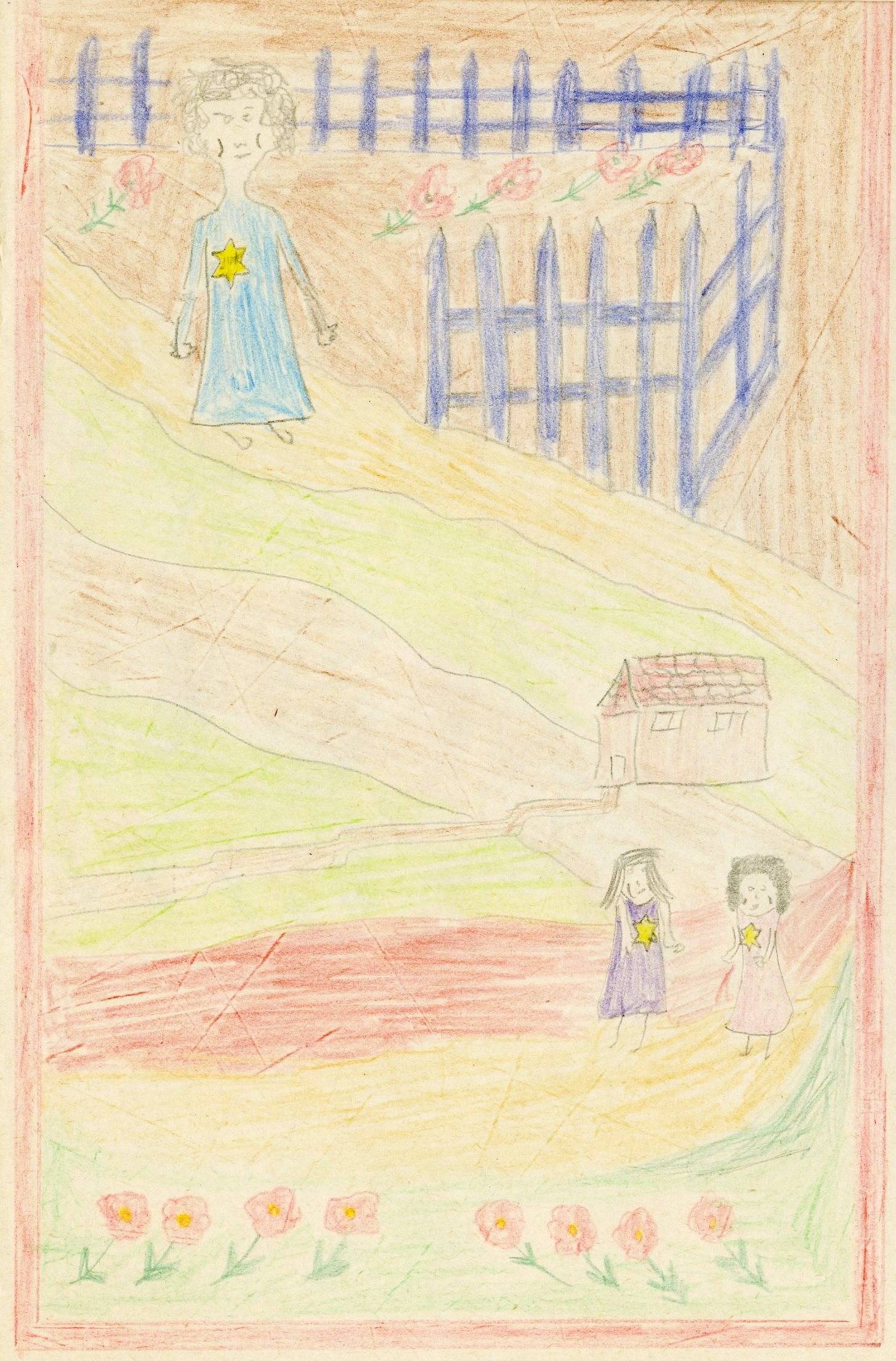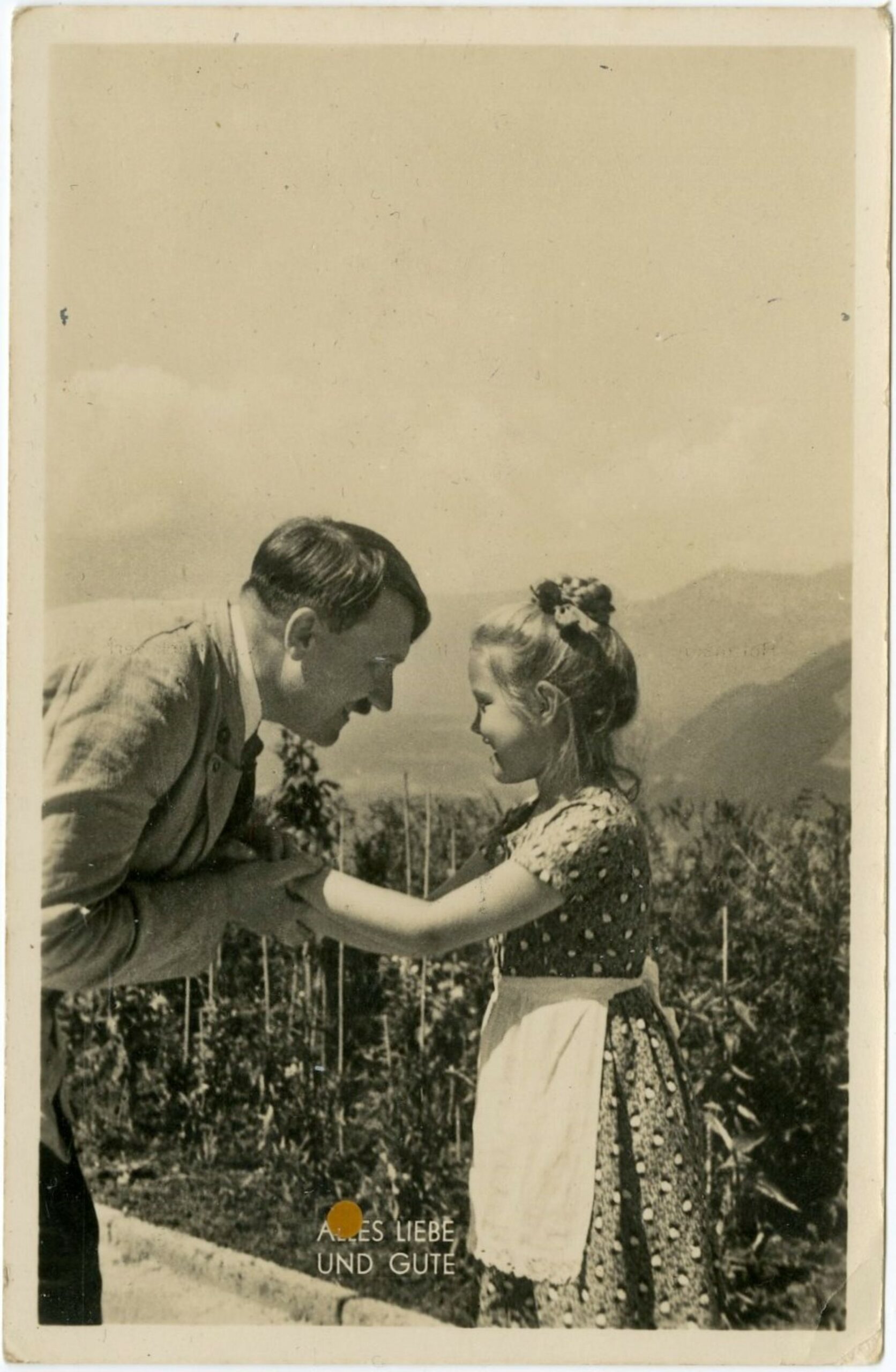About the rare notebook

It's not every day that such an important historical item arrives at the Dynasty auction house. We recently received a notebook of drawings by the Jewish girl Renate Krochmal, one of the children of the Izieu orphanage in France who perished in Auschwitz. It is hard to describe the excitement that gripped the auction house employees when we flipped through the pages of the notebook in front of Kruchmel's graceful paintings. A four-page notebook with drawings by Renate Krochmal - in some of the paintings Renate painted a yellow patch on the clothes of the characters - It was after the Nazi occupation of France, and that was the way Renate identified the Jews she saw around her and this impression of a 7-year-old girl she expressed in her paintings. On the cover page of the notebook appears the name of Krochmel, the name of the orphanage "Enfants D'izieu" and illustrations of the French flag. A moving and rare relic from the Holocaust era made by a Jewish girl from the Izieu Orphanage in the midst of the World War shortly before she perished in Auschwitz.
The Jewish girl Renate Krochmal
Renate Krochmal is one of the forty-four Jewish children listed as the "Children of Izieu", most of them refugees from different countries, who were deported on April 6, 1944 by the French and the Gestapo from the Izieu orphanage in eastern France, in the Ain district, to Auschwitz and Tallinn, where they perished in the death camps. Renate Krochmal's name also appears on the official memorial plaque in the orphanage today. According to the information at the Yad Vashem museum, eight-year-old Renate and her six-year-old sister Liane were at the orphanage. They were deported from the orphanage in April 1944 to their deaths. In 1938, Jakob and Emily Krochmal -Kolbushover fled from Austria with their three children, Siegfried (b. 1931), Renate (b. 1935) and Liane (b. 1937), and arrived in Belgium. Jakob had a brother and sister in the United States, but all his attempts to obtain entry visas to the US for himself and his family failed. The Krochmal family was arrested and imprisoned in the Rivesaltes concentration camp. Siegfried died in Rivesaltes. His parents were transferred to Drancy and deported in September 1942 to Auschwitz, where they were murdered. It is not known when and how Renate and Liane arrived at the Izieu orphanage, but they were caught in the raid on the orphanage, deported along with all the children to the extermination camps in Eastern Europe and murdered. The Yad Vashem museum also has a photo of Renate Krochmal.

Izieu's children and their bitter fate
During World War II, after France's surrender to Germany in June 1940 and especially after the roundup of Parisian Jews in the summer of 1942, dozens of Jewish children born in France, Belgium, Austria, Algeria, Romania, Russia, Germany and Poland arrived at the Izieu orphanage. The orphanage was supervised by OSE. The children were brought by French and Jewish-French underground groups, who sought to save them from deportation to the extermination camps in Eastern Europe. At the orphanage, the children were cared for by Jewish and Christian caregivers alike, who protected them from the horrors of the time. The orphanage had a fixed daily schedule that included walks, outdoor activities and studies. Over a hundred children stayed at the Izieu orphanage from its establishment in May 1943 until the German raid in April 1944. Some only stayed for a few weeks or months.
From November 1942, when Germany invaded Vichy France territory and annexed this area to Germany, until September 1943, the Izieu area - in southeastern France - was held by the Italians, Germany's allies. The Italians did not act as vigorously to deport Jews as the Germans did, so this area was considered relatively safe for hiding Jews and members of the French Resistance. In September 1943, with the Allied invasion of Italy and the fall of southern Italy to the Allies, the Germans also conquered the area of southwestern France, increasing the danger to hidden Jews.

On April 6, 1944, Gestapo men and French policemen under the command of Klaus Barbie raided the orphanage by surprise. At that time there were 44 children at the orphanage - Renate Krochmal was among them. The Germans loaded the 44 children and seven staff members onto trucks and deported them to Montluc prison in Lyon. From there the children and staff were deported to the Drancy concentration camp and from there on several transports, in April, May and June 1944, to Auschwitz and Tallinn, where they were gassed and shot to death. The director of the orphanage, the Jew Miron Zlatin, husband of Sabine Zlatin, was deported on Transport 73 which left France for Tallinn on May 15, 1944 and murdered. His wife Sabine, who was among the orphanage staff, was not at the orphanage at that time and thus survived. Of the deportees, only caregiver Léa Feldblum survived. Sabine Zlatin dedicated her life to commemorating the story of the Izieu orphanage children. In her testimony at the 1987 war crimes trial of Nazi criminal Klaus Barbie - head of the Lyon Gestapo, who organized the children's deportation - Léa Feldblum recounted the story of the orphanage and the children's deportation. That same year, the building where the orphanage had operated was converted into a museum commemorating the children's story and the deportation events. On April 6, 2015, on the 71st anniversary of the deportation, French President François Hollande inaugurated the renovated orphanage museum, after it had been closed for several months for renovations.
About Renate Krochmal and the Izieu Orphanage see also here







